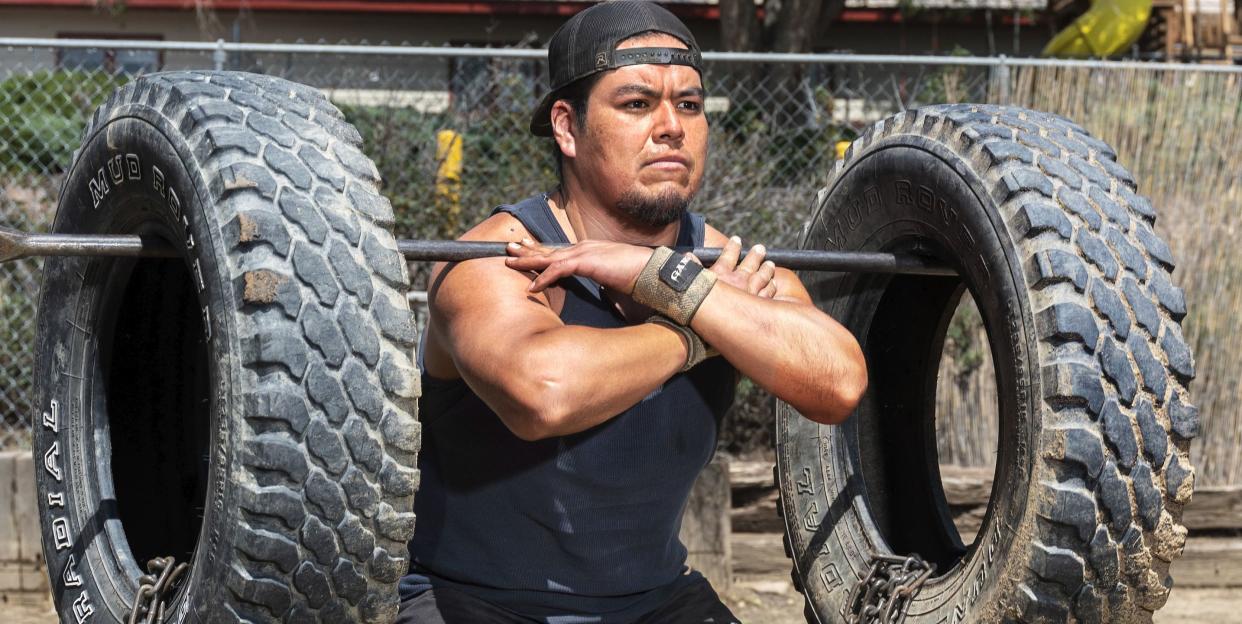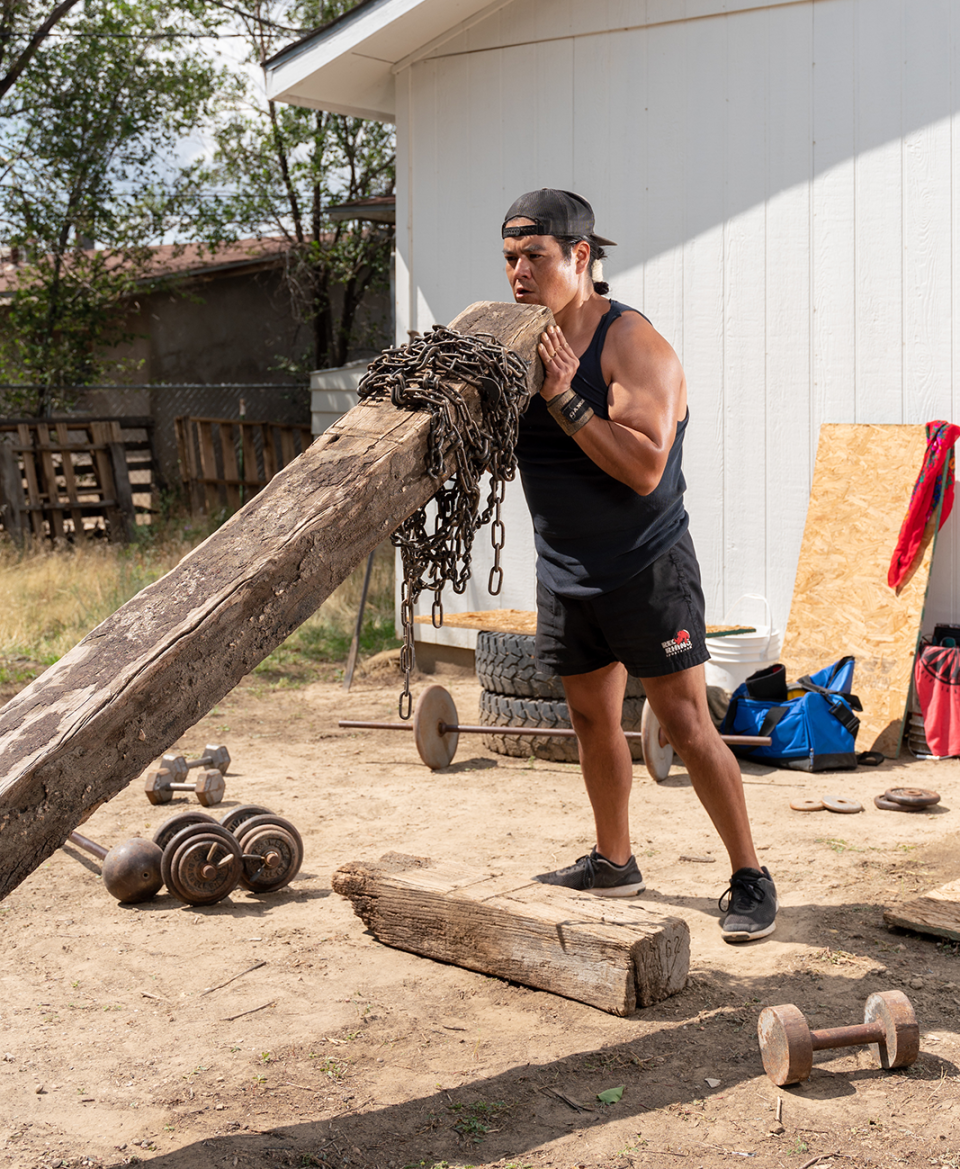How One Fitness Enthusiast Is Tackling the Navajo Diabetes Crisis

LOREN ANTHONY'S BACKYARD gym keeps growing. Early this year, he had a few wooden beams. When summer ended, he had railroad ties, chains, and crates, MacGyver-ing them together for deadlifts and shoulder presses.
The 37-year-old grits out a workout session nearly every day, often uploading clips to his Instagram or Facebook account. It’s how he inspires his Diné people to find ways to train—and he desperately wants them to do that. “I want more people to understand that fitness is a lifestyle that isn’t a trend,” he says.
It’s a lifestyle that Anthony hopes more in the Navajo Nation can embrace, because it may be the key to overcoming the health issue that’s plagued them since the early 1970s: diabetes. Roughly one in every five Navajo has prediabetes, the highest ratio of any racial or ethnic group in the U. S.

Dietary issues are part of the problem. When the Diné were forced off their homeland and moved to Bosque Redondo, in present-day southeast New Mexico, they relied on second-rate government rations due to crop failure and alkaline water. More than a century later, prepackaged foods sold at gas-station convenience stores are the easiest meal choice, partly because there are just 11 grocery stores on the reservation’s 27,413-square-mile expanse.
Lack of fitness facilities and instruction is the other issue. Gyms are an uncommon sight on Navajo lands. When the government started the Special Diabetes Program for Indians in 1997, the Navajo Nation built seven “wellness centers” on the reservation. Even before coronavirus concerns led those gyms to temporarily shut down, limited hours prevented many Navajo from reaching them.
Anthony understands these struggles. His grandparents were diabetic, and his father died of heart failure in 2013, the result of unaddressed heart issues. In 2009, Anthony himself weighed 298 pounds and struggled to breathe and move. Doctors told him he was prediabetic and had high blood pressure. “I really didn’t want the end of me to happen because I didn’t take care of myself,” he says.
He took up bodybuilding and powerlifting, studying both on YouTube. After several years of daily training, he was down more than a hundred pounds. (He currently weighs 181.) He did most of his training at a gym and a football field in nearby Gallup, New Mexico.

In late 2012, he started a workout group, the Iron Warriors. The group met for free workouts twice a week at Gallup’s public school stadium. It began with five people, but within a year, at least 100 were lining up for the field sprints, bear crawls, walking lunges, and pushups. Occasionally, he also held sessions in the community of Tohatchi, in the Navajo Nation, as well as in Phoenix and Albuquerque.
The pandemic forced Anthony to pause his Iron Warriors sessions in March, but he won’t let it quiet his fitness message. He knows diabetes can be beaten, because he’s done it: He’s no longer at risk of the disease, and he’s off his blood-pressure medication. The moment public gatherings are permitted, he says, the Iron Warriors will be on the field again. Until then, it’s more backyard videos.
“It’s encouraging to see people’s progress,” he says, “because that’s something I wish I could’ve done for my dad when he was here.”
You Might Also Like

